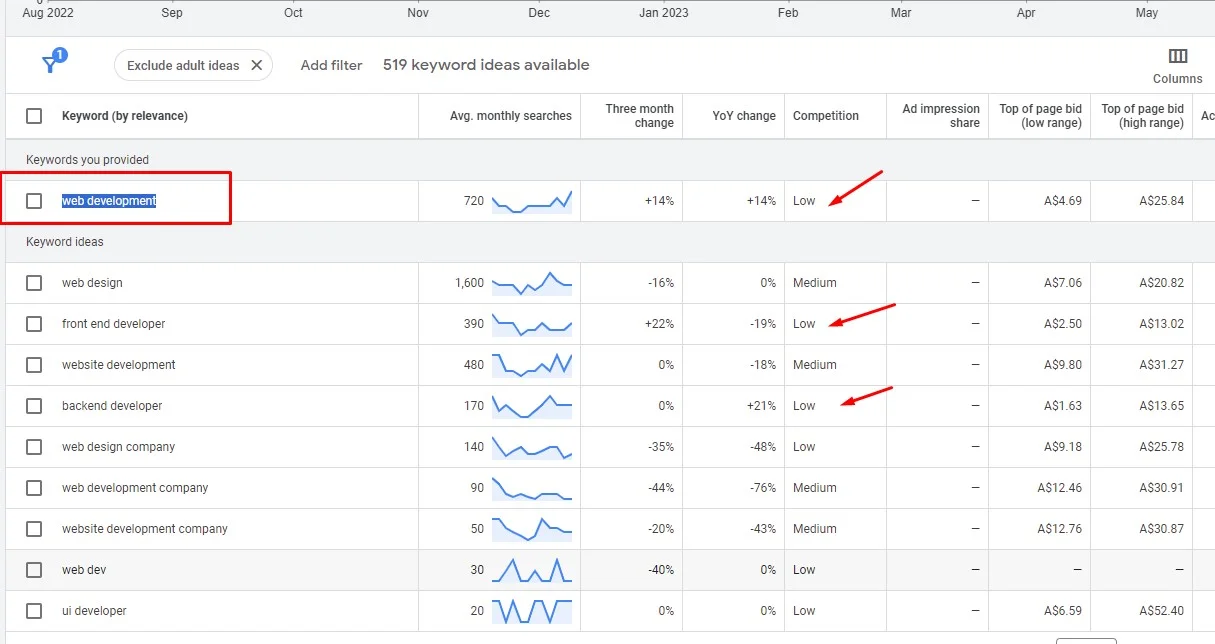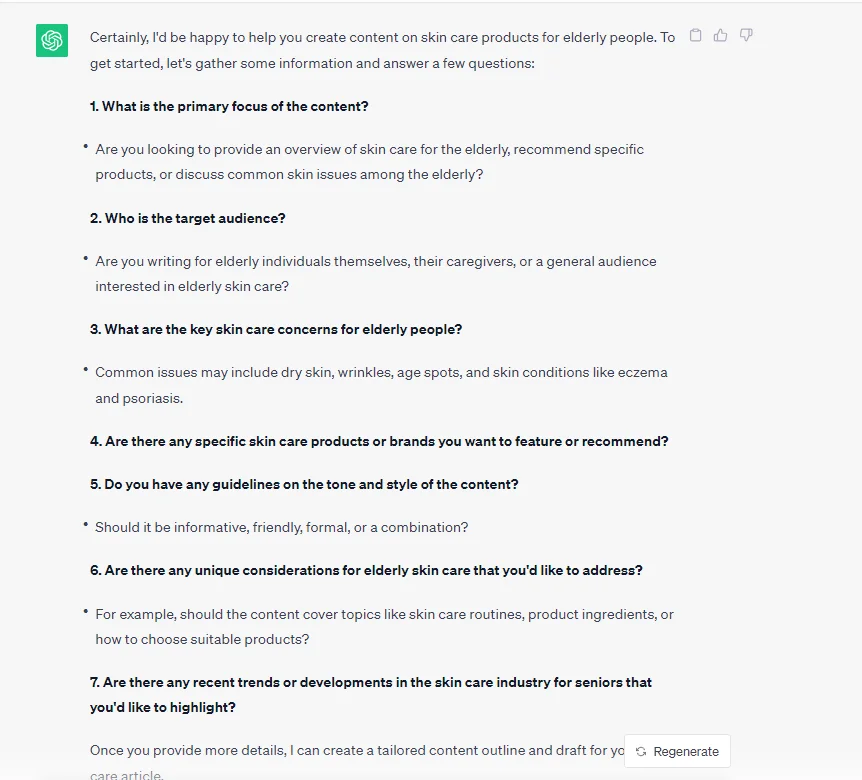
In the fast-evolving digital landscape, your website is often the first interaction potential customers have with your brand. It’s not just a virtual storefront; it’s a powerful marketing tool. To make a lasting impression and boost your brand’s online visibility, you need to ensure your website is not just visually appealing but also optimized for search engines. In this article, we’ll explore how effective web development can drive SEO success and guide you on transforming an average website into a high-converting online asset.
Before delving into the strategies for SEO success, let’s understand why a better web development plays a pivotal role:
1. Page Speed Matters: Did you know that 40% of users abandon a website if it takes more than three seconds to load? Page speed is a crucial ranking factor for search engines. A well-developed website ensures swift loading times, reducing bounce rates and improving SEO.
What you should do to make it happen?
Bear in mind that the optimization of website performance is a perpetual undertaking, necessitating regular maintenance and oversight to attain peak outcomes!
2. Mobile Responsiveness is Non-Negotiable: With a significant portion of web traffic coming from mobile devices, Google prioritizes mobile-friendly websites. Effective web development ensures your site looks and performs flawlessly on smartphones and tablets, enhancing your SEO standing.
In January 2023 mobile devices excluding tablets accounted for nearly 57 percent of web page views worldwide. Meanwhile, over 74 percent of webpage views in Africa were generated via mobile. In contrast, the majority of web traffic in North America still took place via desktop connections with mobile only accounting for 46.88 percent of total web traffic. While regional infrastructure remains an important factor in broadband vs. mobile coverage, most of the world has had their eyes on the recent 5G rollout across the globe, spearheaded by tech-leaders China and the United States. The number of mobile 5G subscriptions worldwide is forecast to reach more than 4 billion by 2026.
Note :To remain competitive and garner attention, it is imperative that your website is optimized for mobile devices without compromising its loading speed. You may assess the mobile performance of your website by accessing the following link.https://pagespeed.web.dev/
3. User Experience Affects Rankings: Google rewards websites that offer an exceptional user experience. From intuitive navigation to clear calls-to-action, web development shapes how users interact with your site. Positive user experiences translate into lower bounce rates and higher SEO rankings.
As per the google new update it had it had reveled certain factors that you should consider for website as per their updates on August 2023 read more about it. Read More to get the update about google core updates
Read more about the reading signals from the google resources
It is revealing us what you should do and not. Learn More about SEO Signals
Effective web development begins with keyword research. Identify keywords relevant to your business and industry, and seamlessly integrate them into your website’s content, headers, and metadata.

Remember as per the google language model still you can rank for more keywords, other than what you target. Google search signals looking for intent behind your query using their language mode.
For example if someone searching “best skin care practices” it will still give the sites which has not exactly used the keyword but had used a key words such as –
as per the language mode of Google Search signals.
Interesting isn’t it? Now you know how the keywords work.
Point to be noted:
Competing against larger brands can prove challenging when aiming to appear at the top of search results. To overcome this obstacle, it is imperative to keep in mind that utilizing low-competition keywords with high search volumes can aid in boosting your site’s authority and visibility.
Focus on creating informative content that aids decision-making rather than solely promoting your products or services. Develop a content calendar based on these principles.
High-quality, relevant content keeps visitors engaged and encourages them to explore your site further. Regularly update your content to reflect industry trends and audience needs.
71% of consumers trust solution that provide useful information without trying to sell them something.
85% of consumers trust solutions that take time to walk them through various paths towards decisions; rather than just providing an answer outright.
62% of consumers provide information and tools for using products they’ve bought.
85% use ads and sponsored content share information of help address a need.
When it comes to content, our focus often centers on selling our products or services rather than fostering engagement. Marketo offers an exceptional content strategy that emphasizes providing the type of valuable information and insights that audiences crave. Download the comprehensive booklet for further details and maximize your impact.
Craft compelling meta titles and descriptions for each page. These snippets are often the first impression users have of your content.
People won’t click the moment you appear in the SERP ranking until you give them a reason to click. You should do that by giving them the promising title and a description.
Let’s create examples for both a weak title and a compelling meta title for an article offering tips on improving skin for glowing skin:
Weak Title: “Tips for Better Skin”
This title is vague and lacks specificity. It doesn’t convey the benefits of the content and may not attract much attention in search engine results.
Compelling Meta Title:“Unlock Radiant Beauty: 10 Expert Tips for Glowing Skin”
This title is more compelling because it communicates the following:
Benefit: It promises “radiant beauty” and “glowing skin,” which are desirable outcomes.
Specificity: It mentions “10 Expert Tips,” giving readers a clear idea of what to expect.
Engagement: It uses action words like “Unlock” to engage the reader.
The compelling meta title is likely to attract more clicks in search engine results because it offers a clear benefit and a specific promise to the reader.
Now let us talk about Meta Description. Here are examples for both a weak meta description and a compelling meta description for an article offering tips on improving skin for glowing skin:
Weak Meta Description: “Learn some tips for achieving better skin. We provide advice on how to get glowing skin naturally.”
This meta description is quite generic and doesn’t provide a strong incentive for users to click on the link. It lacks specificity and doesn’t highlight the value of the content.
Compelling Meta Description: “Discover the secrets to radiant beauty with our expert tips! Transform your skin naturally with our comprehensive guide to achieving that coveted glowing complexion.”
This meta description is compelling because it does the following:
Benefit: It promises “radiant beauty” and a “glowing complexion,” which are appealing.
Specificity: It mentions “expert tips” and a “comprehensive guide,” indicating valuable and in-depth content.
Engagement: It uses action words like “Discover” and “Transform” to engage the reader.
The compelling meta description is likely to entice more users to click on the link because it highlights the benefits and value of the content
Bounce Rates: High bounce rates can occur when users find it difficult to navigate or engage with a website. According to a study by RocketFuel, websites with a bounce rate of 26% to 40% are average, while those with a bounce rate of 41% to 55% are above average. However, exceptionally poor user experiences can lead to bounce rates exceeding 70%.
Conversion Rates: Conversion rate benchmarks vary by industry. E-commerce sites might have an average conversion rate of around 2% to 5%, while landing pages for specific campaigns can see much higher conversion rates. A decrease in user-friendliness can result in a drop in conversions within these ranges.
Customer Satisfaction: Measuring customer satisfaction is complex and typically involves surveys or Net Promoter Scores (NPS). If a website’s NPS declines significantly, it suggests a loss of user satisfaction.
Revenue Impact: According to a survey by Akamai and Gomez.com, 79% of online shoppers who experience performance issues are less likely to buy from the same site again. This highlights the potential revenue impact of poor user experiences.
SEO Ranking: While the exact impact on SEO rankings can vary, Google’s algorithms prioritize user experience. Websites that provide a poor user experience may see a decline in search engine rankings over time.
Support Costs: A decrease in user-friendliness can lead to more customer support inquiries and higher support costs. Zendesk reports that the average cost per customer support ticket can range from $5 to $25 or more.
Competitive Disadvantage: Research by PwC found that 32% of customers would stop doing business with a brand after one bad experience. This can result in a loss of market share to competitors.
Missed Opportunities: While the financial impact of missed opportunities is difficult to quantify, studies have shown that word-of-mouth recommendations and referrals are significant drivers of business growth.
Ensure easy navigation with clear menus and a logical site structure. An intuitive layout keeps users on your site longer, signaling to search engines that your content is valuable.
“User-friendly navigation” in the context of website structure refers to the design and organization of a website’s menu, links, and overall layout to make it easy for visitors to find the information they need and move around the site effortlessly. It’s a crucial aspect of web design that directly impacts the user experience.
Hypothetical Scenario: Let’s consider an e-commerce website that initially had a user-friendly design and navigation structure. Users could easily browse products, add items to their carts, and complete purchases. However, over time, the website’s user-friendliness declined due to neglect and outdated design practices.
Impact:
Increased Bounce Rates: As the website becomes less user-friendly, visitors may struggle to find what they’re looking for. High bounce rates, which indicate visitors leaving the site quickly, could increase. Let’s assume a 20% increase in bounce rates.
Decreased Conversion Rates: With a decline in user-friendliness, the conversion rate (percentage of visitors who make a purchase) could drop significantly. Let’s assume a 15% decrease in conversion rates.
Lower Customer Satisfaction: User complaints and negative reviews may increase, damaging the website’s reputation and eroding customer trust.
Lost Revenue: Reduced conversion rates directly impact revenue. For this scenario, let’s say the website was previously generating $10,000 in monthly revenue. A 15% decrease in conversion rates results in a $1,500 monthly revenue loss.
Decline in SEO Ranking: User-friendliness is a factor that search engines consider when ranking websites. A less user-friendly site may see a drop in search engine rankings, leading to decreased organic traffic.
Missed Opportunities: Users who have a poor experience on the site are less likely to return or recommend it to others. This can result in missed opportunities for repeat business and word-of-mouth referrals.
Increased Support Costs: As users struggle to navigate the site, they may contact customer support more frequently for assistance, leading to increased support costs.
Competitive Disadvantage: In competitive industries, a less user-friendly website can put a business at a disadvantage compared to competitors with more intuitive and user-centric sites.
Google gives preference to secure websites. Install an SSL certificate to protect user data and improve SEO. Now! That comes along with your hosting provider services. Ensure your SSL certificate well done to keep your site safe and appear authentic.
Artificial intelligence is revolutionizing web development and SEO. AI-driven tools can analyze user behavior, predict trends, and automate content optimization. Embracing AI in your web development strategy can give you an edge in the competitive SEO landscape.
Leveraging AI features to create more meaningful content is a powerful strategy in today’s digital landscape. Here are some ways you can make the most of AI features for content creation:
Content Generation: AI-powered content generators like GPT-3 can assist in creating high-quality articles, blog posts, and reports. While these tools can be a starting point, it’s crucial to review and edit the content to ensure it aligns with your brand voice and objectives.
Content Research: AI tools can quickly gather data and insights from vast sources. Tools like MarketMuse and Clearscope can help identify content gaps and provide suggestions for improving your content’s relevance and depth.
Personalization: AI can analyze user behavior and preferences to personalize content recommendations. This can lead to higher user engagement and conversion rates. For example, Netflix uses AI to recommend movies and TV shows based on a user’s viewing history.
SEO Optimization: AI-driven SEO tools can analyze keywords, competition, and search trends to help you optimize your content for search engines. These tools can also suggest improvements to boost your rankings.
Natural Language Processing (NLP): NLP-powered tools can help you understand customer sentiment and feedback. By analyzing customer reviews and comments, you can gain insights into what your audience values and adjust your content strategy accordingly.
Chatbots and Virtual Assistants: Implementing AI-powered chatbots on your website can enhance user experiences. They can provide instant responses to common queries and guide users to relevant content.
Content Distribution: AI tools can optimize content distribution by identifying the best times to post on social media, sending personalized email campaigns, and even automating social media updates.
Multimedia Generation: AI can assist in generating multimedia content, including images and videos. Tools like Canva and Lumen5 can help create visually appealing graphics and videos for your content.
Content Summarization: AI can summarize lengthy articles or reports, making them more digestible for readers. This is particularly valuable for content curation and sharing insights.
Translation and Localization: If you have an international audience, AI can assist in translating and localizing content to reach a broader readership.
A/B Testing: AI-powered A/B testing tools can help optimize your content by experimenting with different headlines, images, and CTAs to determine what resonates best with your audience.
Content Analytics: AI-driven analytics tools can provide deeper insights into how your content is performing. They can identify patterns and trends in user behavior, helping you refine your content strategy.
To get the most out of AI features, it’s essential to strike a balance between automation and human touch. While AI can assist in content creation and optimization, it’s still crucial to maintain a human editorial process to ensure that the content aligns with your brand voice and resonates with your target audience. Additionally, regularly updating your AI models and strategies is essential to keep up with evolving user preferences and search engine algorithms
An example to get most out of CHATGPT
Here we are asking the CHATGPT to ask question to get the best content written.


In the digital age, web development and SEO are inseparable. A well-developed website not only captivates your audience but also ensures high search engine rankings. By optimizing for speed, mobile responsiveness, user experience, and content quality, you can transform an average website into an SEO powerhouse. Embrace the evolving role of AI in web development, and you’ll be well on your way to SEO success. Remember, your website isn’t just a virtual space; it’s your brand’s online ambassador.
Ready to take your website to the next level? Contact us to learn how our expert web development services can boost your SEO success.

“Unleashing Digital Potential | Transforming Businesses with Innovation & Success”
Our Branding Pathways
Legal | Policies
© 2023-2024- Hyper Deft Digital, All Rights Reserved